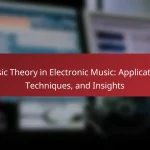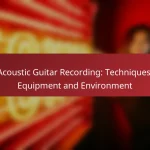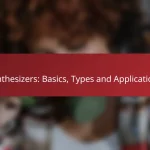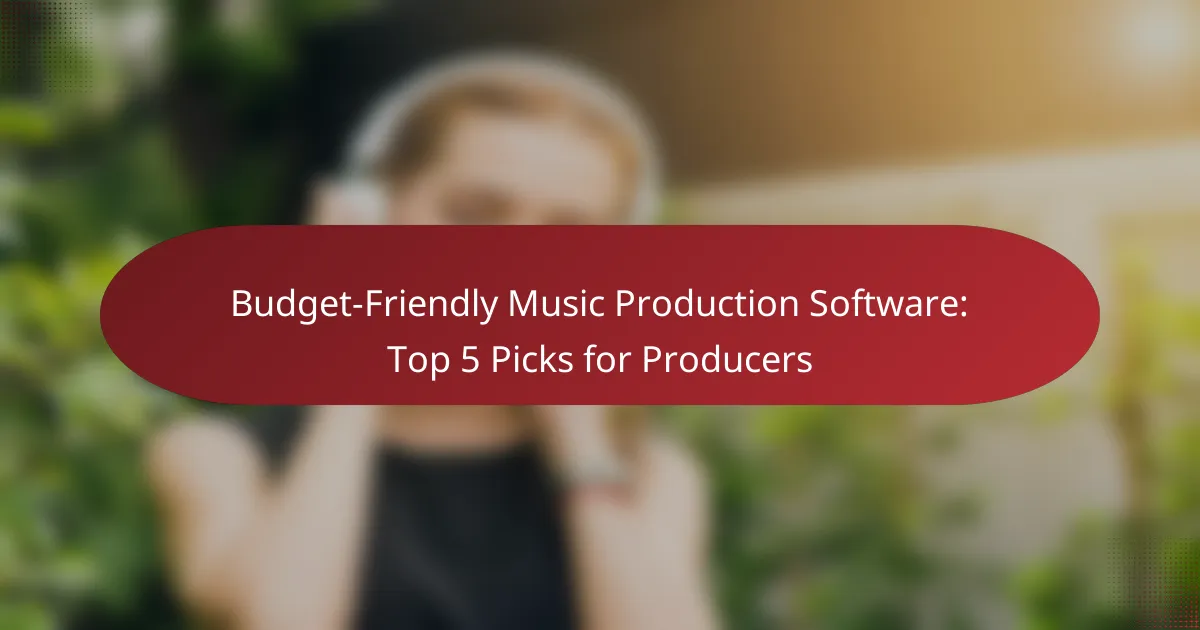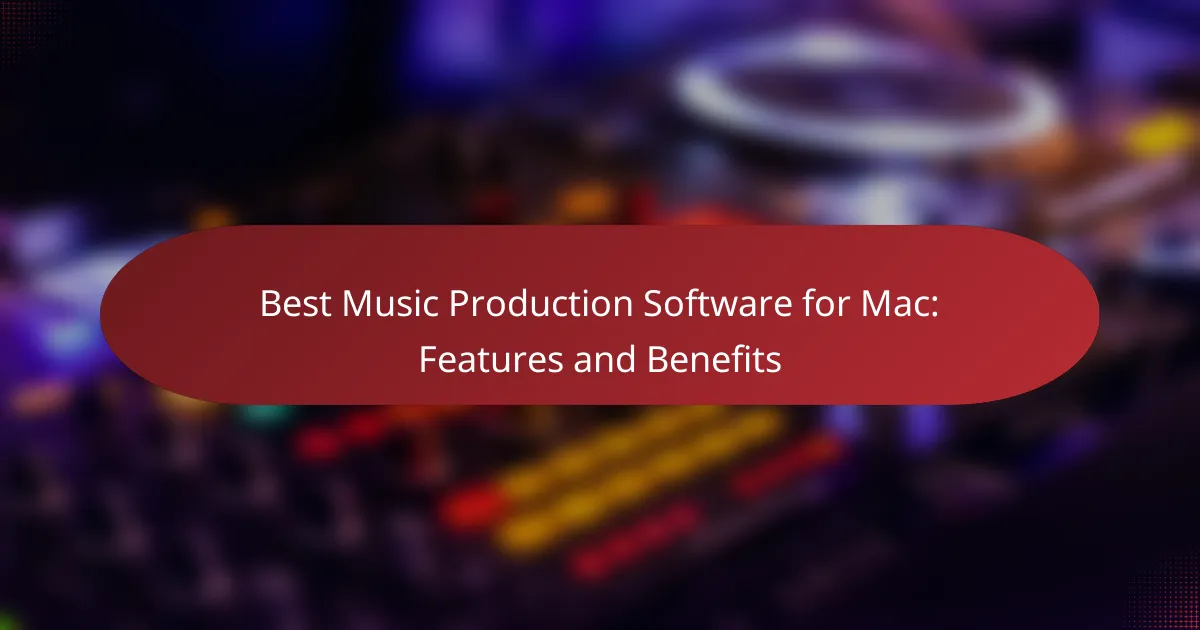For music producers on a budget, there are several software options that deliver quality without the hefty price tag. These tools offer essential features for recording, editing, and mixing, making them ideal for both novices and seasoned professionals. In this guide, we’ll explore the top five budget-friendly music production software picks that can enhance your creative workflow.
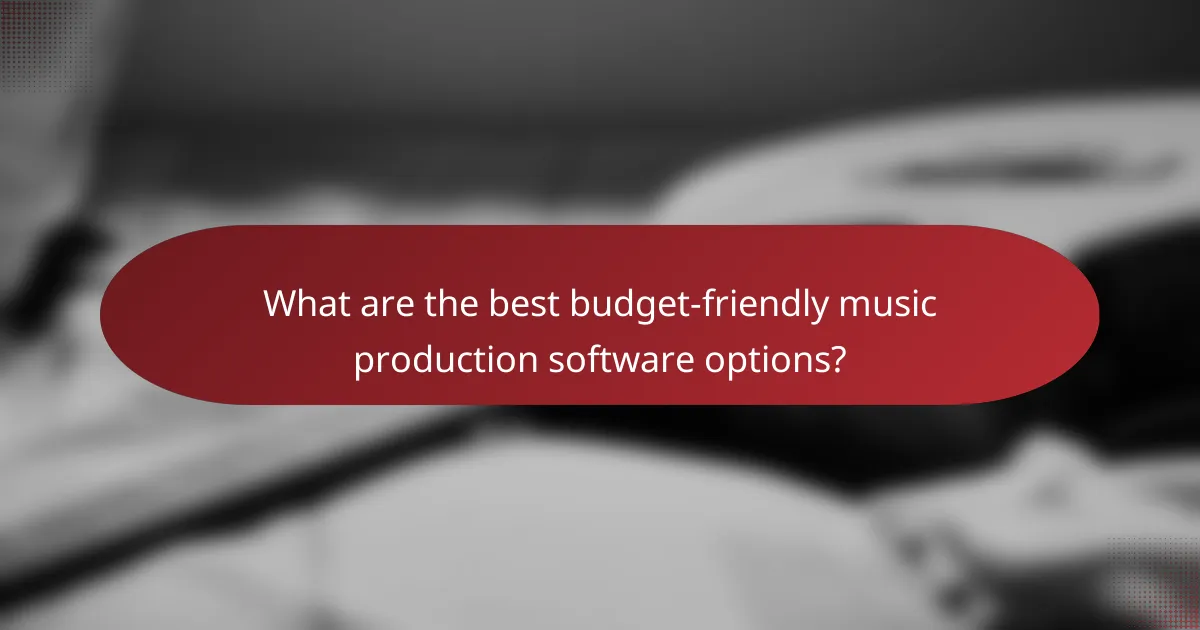
What are the best budget-friendly music production software options?
Several budget-friendly music production software options cater to producers looking for quality without breaking the bank. These tools provide essential features for recording, editing, and mixing music, making them suitable for beginners and experienced users alike.
Audacity
Audacity is a free, open-source audio editing software that is widely used for recording and editing sounds. Its user-friendly interface allows producers to easily manipulate audio tracks, apply effects, and export files in various formats.
While Audacity is powerful for audio editing, it lacks some advanced features found in paid software, such as MIDI support and virtual instruments. However, it is an excellent choice for those focusing on audio recording and basic editing tasks.
GarageBand
GarageBand is a free music production software available exclusively for macOS and iOS users. It offers a range of virtual instruments, loops, and recording capabilities, making it ideal for beginners looking to create music quickly.
Although GarageBand is limited to Apple devices, its intuitive interface and built-in tutorials help users get started with music production. Users can easily upgrade to Logic Pro for more advanced features if needed.
Reaper
Reaper is a low-cost digital audio workstation (DAW) that offers a full range of features for music production. With a flexible licensing model, it allows users to evaluate the software for free before purchasing a license at a reasonable price.
Reaper supports a wide variety of plugins and virtual instruments, making it a versatile choice for producers. Its customizable interface and extensive online community provide valuable resources for users looking to enhance their production skills.
Tracktion T7
Tracktion T7 is a free DAW that offers a comprehensive set of features for music production. It includes unlimited audio and MIDI tracks, a range of effects, and support for third-party plugins, making it suitable for both beginners and experienced producers.
The software’s straightforward design allows for easy navigation, and its active user community provides helpful tutorials and support. Tracktion T7 is a solid option for those seeking a full-featured DAW without the cost.
LMMS
LMMS is a free, open-source music production software that caters to electronic music producers. It features a range of built-in instruments, effects, and a user-friendly interface that allows for easy composition and arrangement of tracks.
While LMMS is great for creating beats and electronic music, it may not be as suitable for recording live instruments. However, its extensive community and resources make it a valuable tool for those focused on digital music creation.
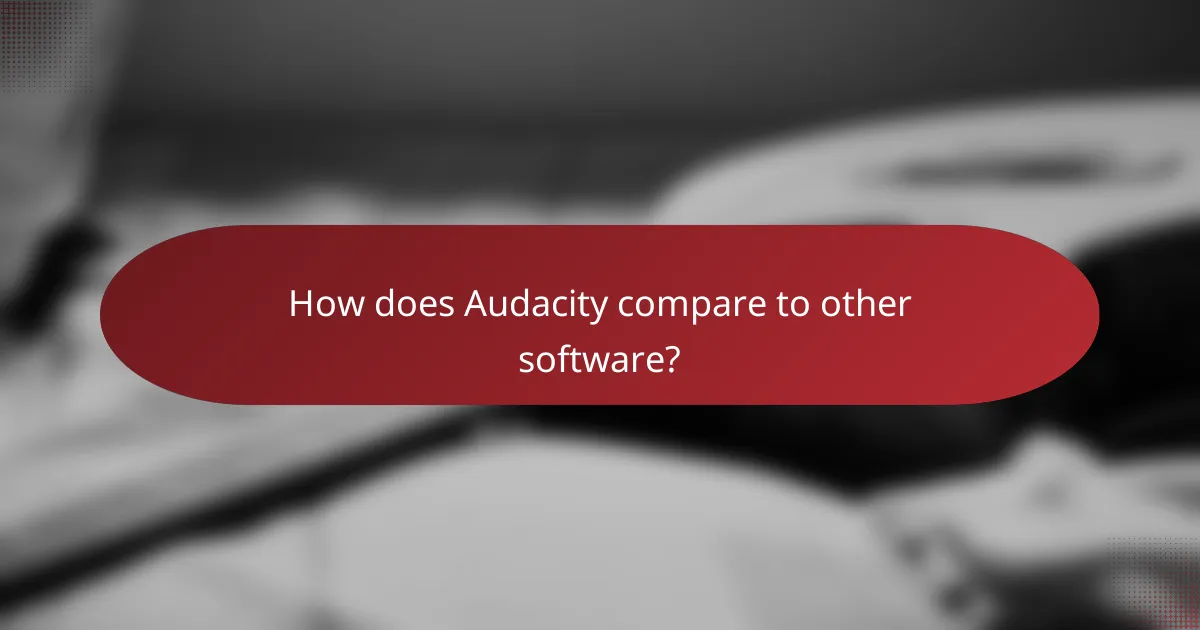
How does Audacity compare to other software?
Audacity stands out among music production software for its cost-effectiveness and user-friendly interface. While it may lack some advanced features found in paid options, its open-source nature and robust editing capabilities make it a strong contender for budget-conscious producers.
Open-source advantages
One of the primary advantages of Audacity being open-source is that it is completely free to use, allowing producers to save on software costs. This model encourages community contributions, resulting in regular updates and a wide array of plugins that enhance functionality.
Additionally, the open-source community provides extensive documentation and support forums, making it easier for users to troubleshoot issues and learn new techniques. This collaborative environment fosters innovation and allows users to customize their experience according to their specific needs.
Multi-platform support
Audacity is compatible with various operating systems, including Windows, macOS, and Linux, making it accessible to a broad audience. This multi-platform support ensures that users can work on their projects regardless of their preferred system, promoting flexibility in music production.
Furthermore, the software’s consistent interface across platforms means that users can easily switch between devices without a steep learning curve. This feature is particularly beneficial for producers who may work in different environments or collaborate with others using various systems.
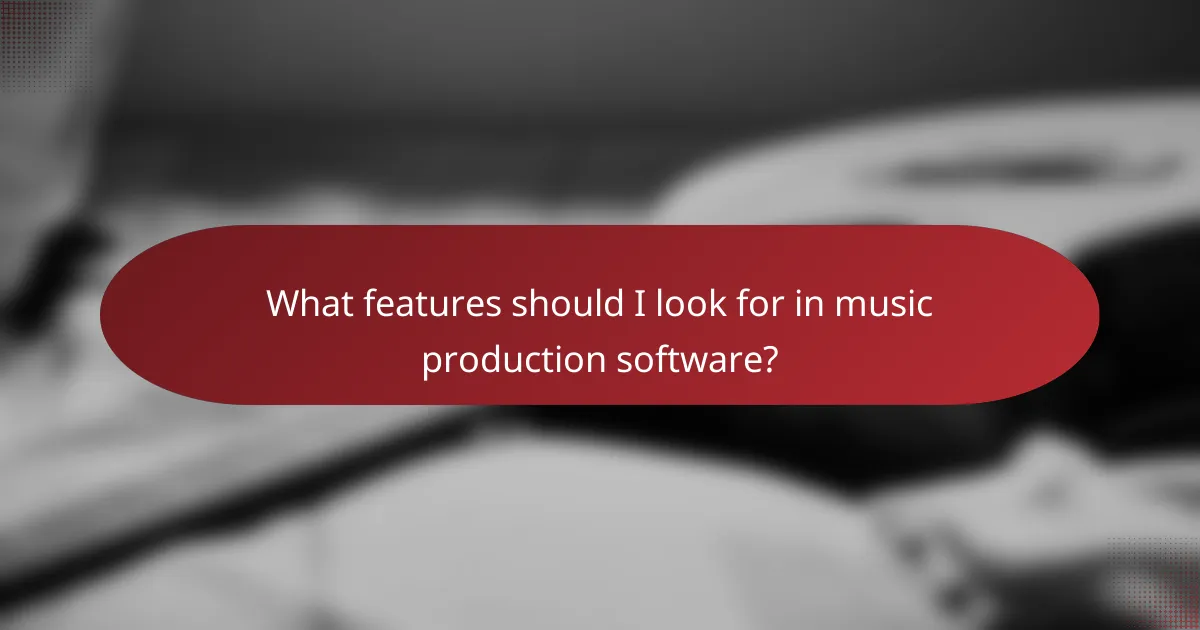
What features should I look for in music production software?
When selecting music production software, prioritize features that enhance your workflow and creativity. Key aspects include audio editing capabilities, plugin support, and user interface design, all of which significantly impact your production experience.
Audio editing capabilities
Audio editing capabilities are crucial for refining your tracks. Look for software that offers multi-track editing, cutting, trimming, and the ability to apply effects seamlessly. A good platform should allow you to manipulate audio clips easily, whether you are adjusting pitch, tempo, or applying filters.
Consider tools that support non-destructive editing, enabling you to experiment without permanently altering your original recordings. This flexibility is essential for producers who want to explore different sounds without the risk of losing their initial ideas.
Plugin support
Plugin support expands the functionality of your music production software by allowing you to integrate virtual instruments and effects. Ensure the software is compatible with popular plugin formats like VST and AU, which are widely used in the industry.
Having access to a variety of plugins can enhance your sound design and mixing capabilities. Look for software that comes with a selection of built-in plugins, as well as the ability to add third-party options, to maximize your creative potential.
User interface design
A user-friendly interface is vital for an efficient music production experience. Choose software with an intuitive layout that allows you to navigate easily between different features and tools. A clean design can significantly reduce the learning curve, especially for beginners.
Consider how customizable the interface is; some software allows you to arrange windows and controls according to your workflow preferences. This adaptability can lead to a more productive environment, enabling you to focus on your music rather than struggling with the software.

What are the pricing models for music production software?
The pricing models for music production software typically include one-time purchases, subscription-based options, and free versions. Each model offers different benefits and drawbacks, catering to various budgets and production needs.
One-time purchase
One-time purchase software requires an upfront payment, granting users permanent access to the program. This model is often favored by producers who prefer to avoid ongoing costs and want full ownership of their software.
Prices for one-time purchase music production software can range from a few hundred to over a thousand USD, depending on the features and capabilities. Popular examples include FL Studio and Ableton Live, which offer various editions at different price points.
Subscription-based
Subscription-based music production software involves paying a recurring fee, typically monthly or annually. This model provides access to the latest updates and features without the need for large upfront investments.
Subscriptions usually cost between $10 to $30 per month, making them more accessible for beginners or those on a tight budget. Notable options include Adobe Audition and Logic Pro X, which offer subscription plans that include additional resources and cloud storage.
Free versions
Free versions of music production software allow users to access basic features without any cost. These versions are ideal for beginners or hobbyists who want to explore music production without financial commitment.
While free versions may have limitations, such as fewer features or restricted export options, they can still provide a solid foundation for learning. Examples include GarageBand and Cakewalk, which offer robust tools for starting producers at no charge.
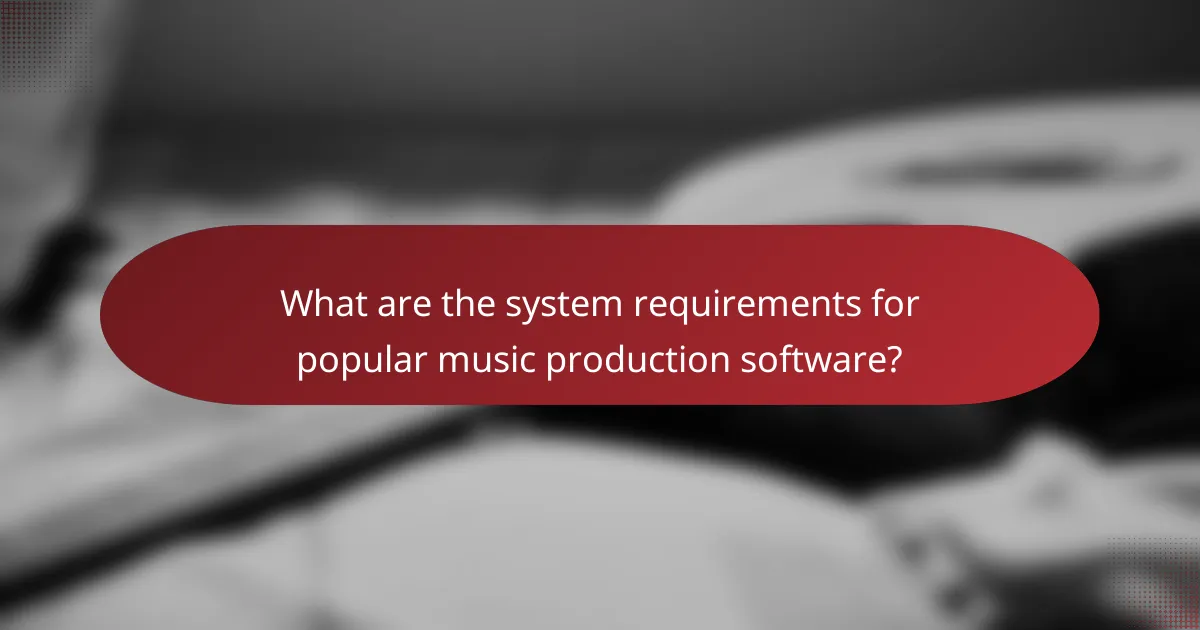
What are the system requirements for popular music production software?
System requirements for music production software vary by application but generally include specifications for the operating system, processor, RAM, and storage. Understanding these requirements is crucial for ensuring optimal performance and compatibility with your hardware.
Windows requirements
For Windows users, most music production software requires at least Windows 10 or later. A multi-core processor, such as an Intel i5 or equivalent, is recommended for efficient processing of audio tracks.
Additionally, a minimum of 8 GB of RAM is advisable, although 16 GB is preferred for larger projects. Ensure you have sufficient storage space, ideally an SSD for faster load times, with at least 10 GB available for installation and additional space for samples and projects.
Mac requirements
Mac users typically need macOS Mojave (10.14) or later for compatibility with most music production software. A dual-core processor is the minimum requirement, but a quad-core or better will enhance performance significantly.
At least 8 GB of RAM is necessary, with 16 GB recommended for handling complex sessions. Users should also have an SSD with ample storage, as many applications require upwards of 10 GB for installation, plus extra for audio libraries and project files.
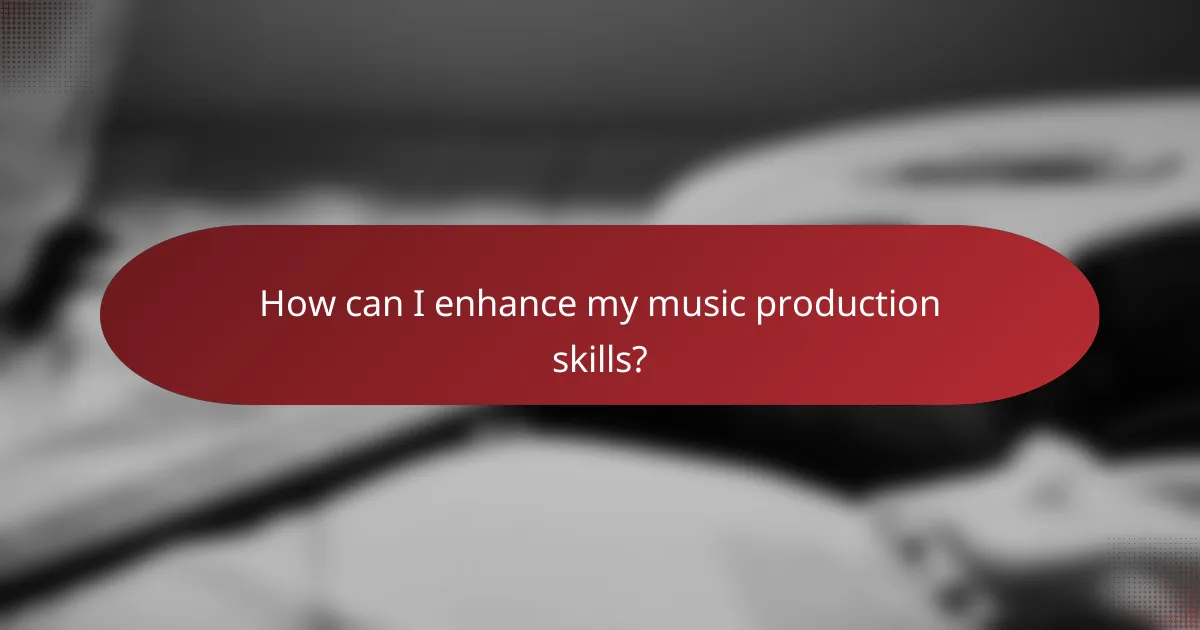
How can I enhance my music production skills?
To enhance your music production skills, focus on structured learning through various resources. Engaging with online courses and YouTube tutorials can provide practical knowledge and techniques that are essential for growth in music production.
Online courses
Online courses offer a structured approach to learning music production, often covering everything from basic concepts to advanced techniques. Platforms like Coursera, Udemy, and Skillshare provide courses tailored to different skill levels, allowing you to learn at your own pace.
When selecting a course, consider factors such as the instructor’s experience, course reviews, and whether it includes hands-on projects. Many courses also offer community forums where you can interact with fellow learners, providing additional support and feedback.
YouTube tutorials
YouTube is a treasure trove of free tutorials that can help you improve your music production skills quickly. Channels like Point Blank Music School and ADSR Music Production offer a wide range of topics, from software tips to mixing techniques.
While YouTube tutorials are accessible, it’s important to choose reputable channels to ensure quality content. Create a playlist of tutorials that focus on specific areas you want to improve, and practice regularly to reinforce what you learn.

What are the emerging trends in music production software?
Emerging trends in music production software include increased accessibility through cloud-based platforms, the integration of artificial intelligence for enhanced creativity, and a focus on mobile compatibility. These developments make music production more user-friendly and efficient for both beginners and professionals.
Cloud-Based Collaboration Tools
Cloud-based collaboration tools allow multiple producers and musicians to work on projects simultaneously from different locations. This trend has gained traction due to the rise of remote work and the need for seamless sharing of audio files and project data. Popular platforms like Splice and Soundtrap enable real-time collaboration, making it easier to create music together without geographical limitations.
Artificial Intelligence in Music Production
Artificial intelligence is increasingly being integrated into music production software to assist with tasks like mixing, mastering, and even composing. AI tools can analyze audio tracks and suggest improvements, helping producers save time and enhance their creative output. Software like LANDR and AIVA showcases how AI can streamline workflows and inspire new musical ideas.
Mobile Music Production
Mobile music production apps are becoming more sophisticated, allowing users to create high-quality music on smartphones and tablets. This trend caters to the growing demand for on-the-go music creation, enabling producers to capture ideas anytime and anywhere. Apps such as GarageBand and FL Studio Mobile offer powerful features that rival traditional desktop software, making music production more accessible.
Subscription-Based Models
Subscription-based models are gaining popularity as they provide users with access to a wide range of tools and updates without the high upfront costs. This approach allows producers to experiment with various software options and stay current with the latest features. Services like Adobe Creative Cloud and PreSonus Sphere exemplify how subscriptions can benefit users by offering flexibility and continuous improvements.

